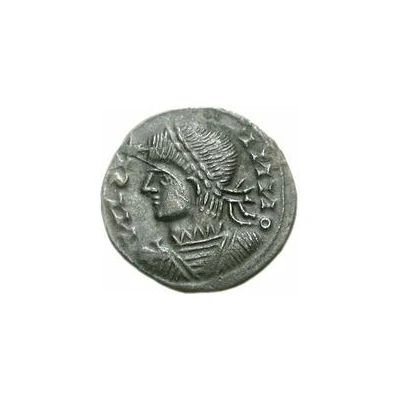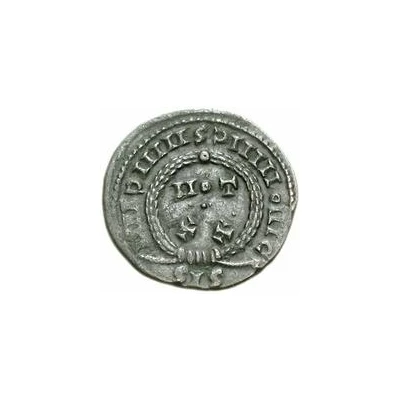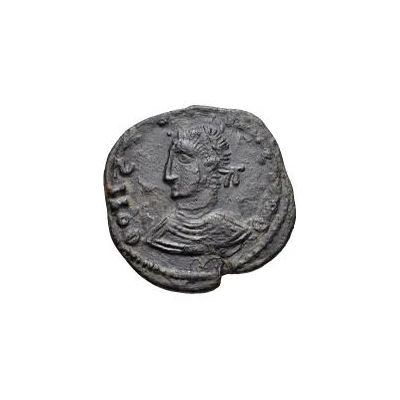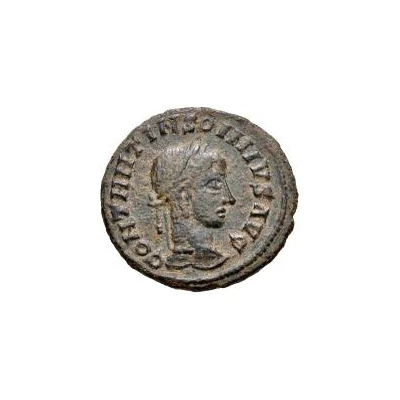
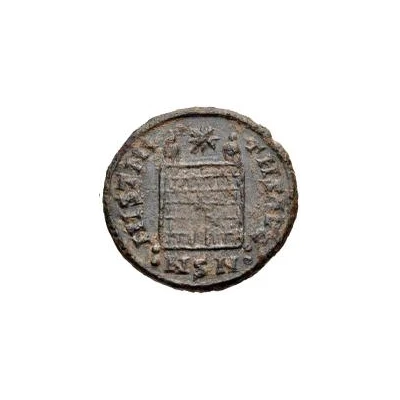

© Classical Numismatic Group, Inc.
Æ In the name of Constantine II or Constantius II; Bust facing right
| Bronze | 2.38 g | 19 mm |
| Issuer | Uncertain Germanic tribes |
|---|---|
| Type | Standard circulation coin |
| Years | 337-400 |
| Currency | Solidus (circa 301-750) |
| Composition | Bronze |
| Weight | 2.38 g |
| Diameter | 19 mm |
| Shape | Round (irregular) |
| Technique | Hammered |
| Demonetized | Yes |
| Updated | 2024-10-04 |
| Numista | N#165723 |
|---|---|
| Rarity index | 94% |
Reverse
Castle under star and surrounded by legend.
Script: Latin
Lettering:
FHSTIH - THSALVG
NSN
Translation:
[Providentiae Caess]
[Province of the two Caesars]
Edge
Plain
Comment
This type is said to have been struck from the mid- to late-4th century. With the two possible leaders both only coming to power in 337, that is the most likely starting date for this type.Various weights have been recorded of this type from 1.68 grams to 3.38 grams; various diameters of this type have been recorded of this type from 18 millimetres to 19 millimetres.
The denominations of bronze coins that are unknown to numismatists are referred to as Æ (AE), followed by the coin's diameter. The Æ part simply means the coin is made of a base alloy, and because the diameter of these coins is never exactly as intended, different numbers can appear after the Æ for the same type.
The exact lettering of the surrounding legend may vary; while some coins have legible legends, the legends of others may have been reduced to basically only lines.
Interesting fact
One interesting fact about this coin is that it was minted during the reign of Constantine II or Constantius II, who were both Roman emperors in the 4th century. Despite being minted by the Roman Empire, the coin was made by the Uncertain Germanic tribes, indicating that the empire had some level of influence or control over these tribes. Additionally, the fact that it's made of bronze and weighs 2.38g suggests that it was a widely circulating coin used for everyday transactions.
